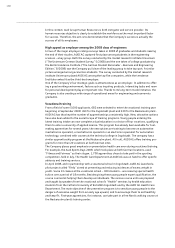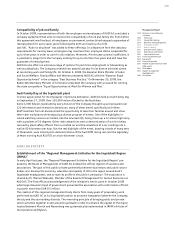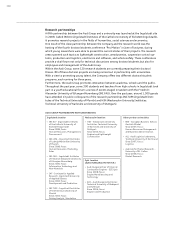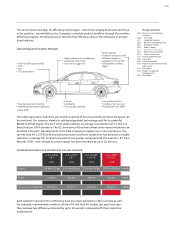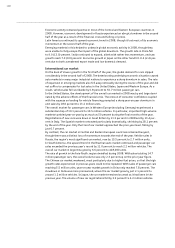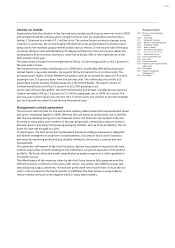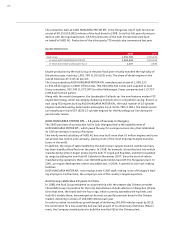Audi 2008 Annual Report Download - page 166
Download and view the complete annual report
Please find page 166 of the 2008 Audi annual report below. You can navigate through the pages in the report by either clicking on the pages listed below, or by using the keyword search tool below to find specific information within the annual report.
147
Management Report
128 Business and underlying
situation
128 The Group
131 Corporate steering
134 Research and development
136 Employee matters
139 Audi in society
141 Environmental aspects
147 Economic environment
150 Course of business
157 Financial performance
159 Net worth
160 Financial position
160 Report on post-balance sheet
date events
161 Risk report
165 Report on expected
developments
169 Disclaimer
The Audi Group already performed crucial pioneering work in alternative drive concepts back
in 1989, when it developed the Audi Hybrid duo. The Company took the wraps off yet another
version to incorporate innovative hybrid technology when it presented the Audi A1 Sportback
concept study car last fall. Based on the ultra-efficient 1.4-liter, 110 kW (150 hp) TFSI engine,
the result was a plug-in hybrid with lithium-ion energy accumulator sufficient for driving up to
100 kilometers exclusively in electric mode. For all its sporty performance and acceleration from
0 to 100 km/h in just 7.9 seconds, the concept vehicle on average needs only 3.9 liters of pre-
mium gasoline per 100 kilometers. That is equivalent to CO2 emissions of 92 g/km.
The production launch of a hybrid model with lithium-ion battery is scheduled for late 2010:
the Audi Q5 Hybrid. Using the Audi technology of the modular longitudinal platform, this con-
cept will then be made available to other vehicles in the range and adopted as required.
Audi Group engineers are also developing other electrification concepts for plug-in hybrids,
ranging from the fuel cell to the battery-only electric vehicle. The Company benefits in such
activities from its close collaboration with the Volkswagen Group.
In order to make traffic flow as efficiently as possible in the future, the Company is also working
intensively on advanced traffic guidance systems. The “Travolution” project, which is being im-
plemented in conjunction with the City of Ingolstadt, aims to minimize congestion and frequent
braking and accelerating in order to avoid unnecessary CO2 emissions.
Further detailed information on the subject of the environment can be found on the Internet
at www.audi.com/environmental-protection and on the Group portal at
www.volkswagen-sustainability.com.
ECONOMIC ENVIRONMENT
Global economic situation
There was a noticeable slowdown in global economic growth during the course of 2008. With
the troubles of the U.S. financial markets worsening during the latter half of the year, the bank-
ing industry worldwide fell into a serious crisis, which then spread to the real economy.
By the end of 2008, numerous industrial nations were already in recession and, after having
initially enjoyed dynamic economic growth, emerging markets in Asia, Latin America and Central
and Eastern Europe likewise found themselves sucked into the global economic downturn in late
2008. The high inflationary pressures eased significantly in the latter part of the year as a result
of falling raw materials and energy prices.
Economic growth in the United States fell sharply in 2008 and the gross domestic product grew
marginally by only 1.3 (2.0) percent. Particularly in the second half of 2008, the development
of the economy was overshadowed by the financial crisis. Collapsing U.S. stock markets and the
resulting loss of wealth colluded with the deteriorating state of the job market to turn the con-
sumer climate sharply negative.
Economic activity in Western Europe experienced a downward phase in 2008. Growth in the
gross domestic product fell away sharply in many countries, including Italy, Spain and Great
Britain. Economic growth for the euro zone reached only 0.9 (2.7) percent.
With Germany’s economic growth increasingly dwindling from summer 2008, the economy
entered into a recession by the end of the year. Economic growth declined from 2.5 percent in
2007 to just 1.3 percent in 2008. Exports were hit particularly badly as a result of the global
economic downturn. Consumer spending remained subdued; at first due to the loss of purchas-
ing power caused by inflation and then due to growing economic uncertainty.



